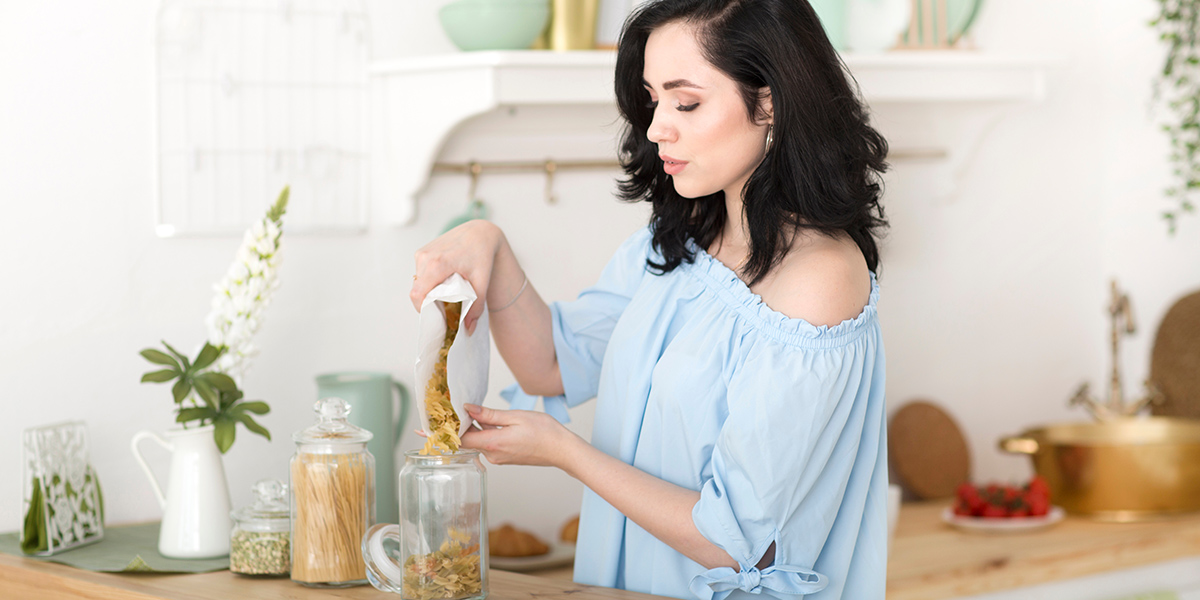Zero-waste tips for greener living at home

Living more sustainably at home doesn’t need to be complicated or expensive. In fact, some of the best zero-waste habits are surprisingly simple and can even save you money in the long run. The idea isn’t about being perfect; it’s about making small, thoughtful changes that cut down on waste and help protect the planet. Here are some easy ways to get started.
1. Begin in the kitchen
The kitchen is usually the heart of the home, but it is also where most waste piles up. From food packaging to cling film and forgotten leftovers, the amount that ends up in the bin can be surprising. Making a few simple swaps here can have one of the biggest impacts on your household waste.
- Trade cling film for beeswax wraps, silicone lids, or even a clean tea towel.
- Save old jars and use them for storing dry goods, leftovers, or even as drinking glasses.
- Choose items with minimal or recyclable packaging whenever you shop.
2. Tackle food waste head-on
Globally, about a third of all food produced goes to waste, and much of it happens in our homes. Often, it’s just down to a lack of planning or forgetting what we already have in the fridge. By being more intentional with how we buy, store, and use food, it’s possible to dramatically cut waste while saving money at the same time.
- Try meal planning before you shop so you only buy what you’ll use.
- Store food properly. For example, keeping herbs in a glass of water helps them stay fresh longer.
- Freeze leftovers in labelled containers for quick midweek meals.
- If you have outdoor space, consider composting. Even without a garden, many councils and communities now offer food waste collection or compact compost bin options.
3. Swap out disposables
We often reach for convenience items without giving them a second thought, but many of these throwaway products have long-lasting impacts on the environment. By gradually replacing single-use items with reusable alternatives, you can cut down your household waste significantly and often save money too.
- Use cloths instead of paper towels.
- Switch to a stainless steel safety razor instead of disposable plastic ones.
- Skip single-use coffee pods and try a reusable filter or refillable pod instead.
4. Green your bathroom routine
Bathrooms are often overlooked when it comes to zero-waste living, yet they are full of opportunities for easy swaps. From toiletries to personal care products, the packaging and disposables add up quickly. A few small changes can make your bathroom much more eco-friendly.
- Swap bottled shampoo and shower gel for solid bars.
- Switch to reusable cotton pads for makeup removal or skincare.
- Choose refillable toiletries when possible.
5. Shop with intention
Shopping habits play a huge role in how much waste we create. Many of us are quick to buy new, but often we could repair, borrow, or source second-hand items instead. By slowing down and being mindful about purchases, you reduce waste and usually save money too.
- Before buying something new, pause and ask: Do I really need this?
- Look for local swap groups, charity shops, or second-hand platforms for items that are just as good as new.
- When you do buy new, choose brands that use sustainable materials and minimal packaging.
Start your Zero-waste living today
Zero-waste living isn’t about doing everything perfectly. It is about progress, not perfection. Each small step, whether it is carrying a reusable bag, composting your scraps, or switching to refillable toiletries, adds up to a big difference over time. Start with one or two swaps that feel doable, build from there, and before you know it, greener living will feel second nature.